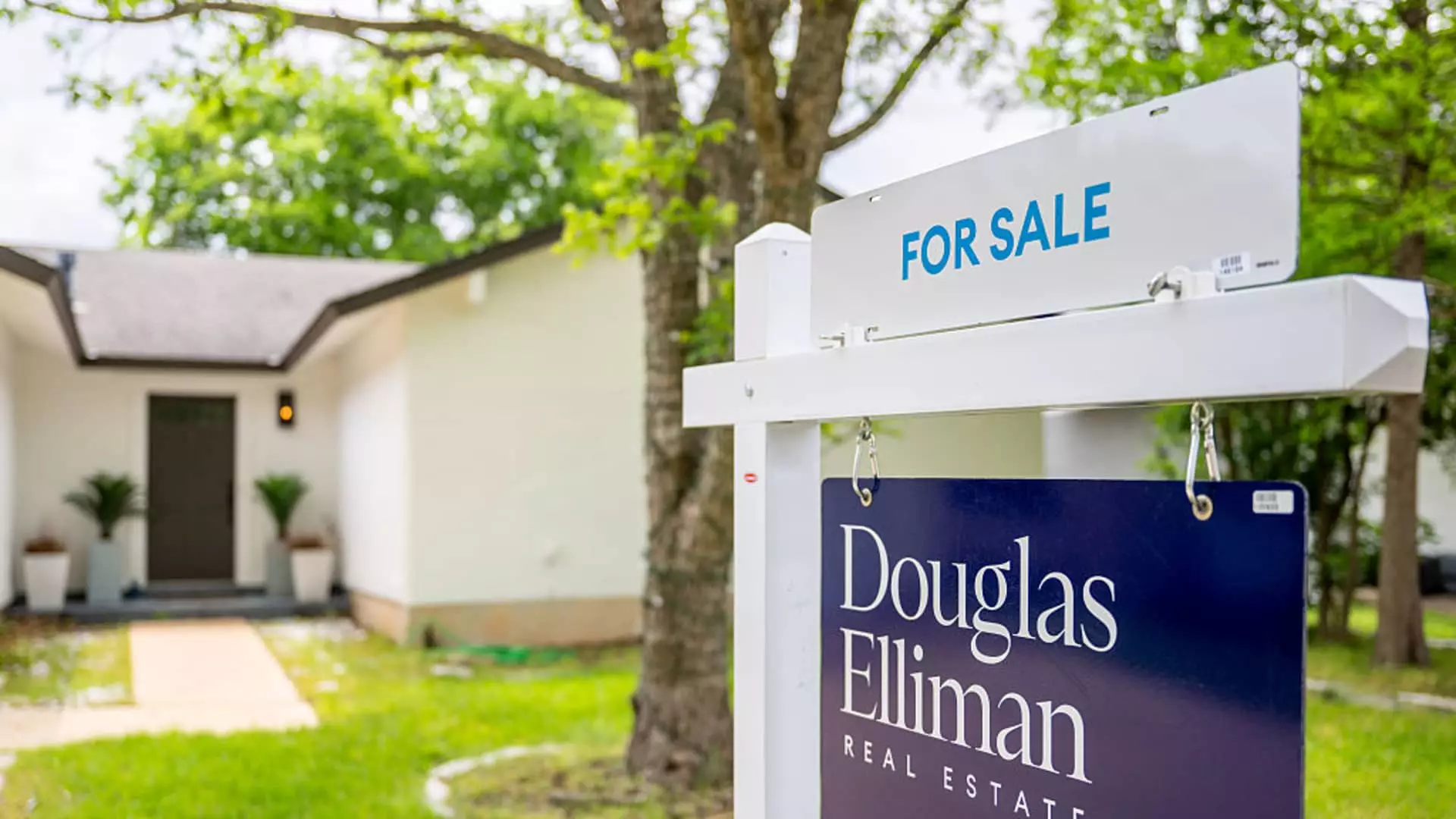In the labyrinthine world of real estate, the pulse of the market is as fickle as the winds of fortune. Recent statistics from the National Association of Realtors (NAR) illustrate a meager 0.8% increase in the sales of previously owned homes as of May, resulting in an annualized rate of 4.03 million units. This slight uptick belies a more significant malaise, as housing analysts had foreseen a slight decline of 1%. Such discrepancies highlight a market that continues to wobble under the pressures of fluctuating economic conditions. Notably, sales were down by 0.7% compared to the same month last year, painting a picture of stagnation where growth is desperately needed.
Regional Disparities: A Tale of Two Markets
While the uptick in sales may seem positive, it is essential to dissect the data further. The Northeast region experienced a notable surge of 4.2% month-to-month, while the West, the most expensive market, suffered a sharp decline of 5.4%. This glaring contrast indicates that the housing market is not just stagnant but is fractured along geographical lines. Homeownership, often considered a cornerstone of the American Dream, is slipping through the fingers of many, particularly in regions where prices escalate uncontrollably. The West’s results are a particular cause for concern, signaling a need for more affordable housing solutions that seem to fall on deaf ears amid Silicon Valley’s tech boom and the pressures of urban gentrification.
The Mortgage Rate Dilemma
At the heart of the current malaise lies the issue of mortgage rates, which have been consistently high, relegating homeownership to a distant goal for many would-be buyers. Lawrence Yun, the chief economist at NAR, rightly points out that the fluctuating mortgage rates significantly stifle buyer enthusiasm. With rates crossing the 7% threshold in April, it’s clear why many potential homeowners remain on the sidelines. The promise of lower rates, which Yun predicts for the latter half of the year, is more than just wishful thinking; it is an urgent necessity for reviving a market that is losing its vibrancy. When barriers to entry are so steep, the resulting disenfranchisement only deepens inequality, particularly among first-time buyers.
Inventory Insights: An Incomplete Picture
The increase in inventory, with 1.54 million units available at the end of May—a staggering 20% rise from last year—has provided a glimmer of hope. However, with a 4.6-month supply still far from robust, it juxtaposes a growing demand for affordable housing against a backdrop of escalating prices. In May, the median home price reached a record-breaking $422,800, up 1.3% from the previous year, further complicating the landscape. The statistic that 28% of homes sold above list price illustrates a market that is still competitive but accompanied by undeniable pressures, converting the dream of homeownership into a fantasy for many.
The All-Cash Buyer Phenomenon
The fact that a growing segment of transactions—27%—are all-cash purchases further highlights the widening gap between affluent buyers and everyday families. As traditional financing options become less accessible, the dynamics of the market shift, favoring those who can navigate this financial labyrinth with relative ease. This trend raises critical questions about economic equity and the future of homeownership for the average American. As we face the reality of stagnant wages against the backdrop of inflated real estate prices, one must wonder if we are witnessing the slow death of the middle-class homeowner.
Rethinking Solutions for a Complex Dilemma
As the real estate market continues to grapple with these multifaceted challenges, it is evident that mere statistical fluctuations cannot mask the underlying issues. Legislative action that targets mortgage rate stabilization and increased affordable housing development is sorely needed. Solutions that prioritize inclusion instead of exclusion must take precedence if we are to avoid relegating homeownership to a privilege accessible only to the elite. Without this urgent shift in perspective, we run the risk of perpetuating a system that not only fails to support its inhabitants but also fractures the very fabric of our society.


Leave a Reply